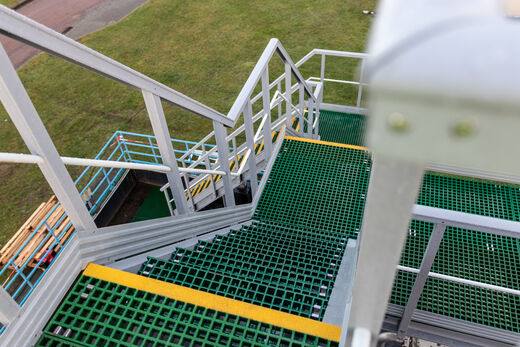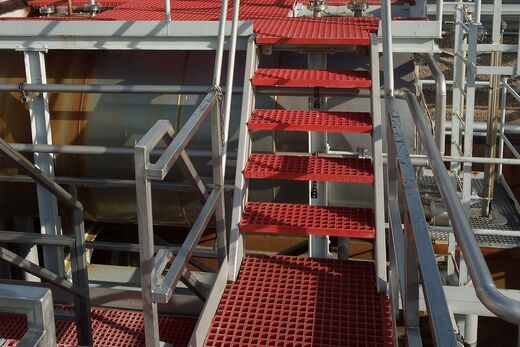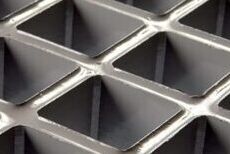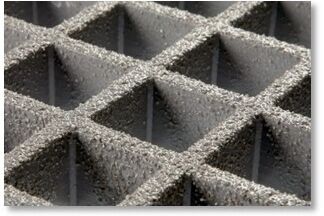How do I choose the right GRP grating?
Our plastic gratings vary based on the type of resin used in their manufacture, the non-slip coating applied to their surface, and their dimensions.
1. Resin type
Our plastic grids are created by placing glass fibre bundles in a waffle-shaped mould and adding resin. This creates a grating with square mesh openings. GRP gratings are available in several standard resin types for specific applications:
Plastic gratings for general use (infrastructure)
Resin type: orthophthalic polyester
- Standard colour: light grey ±RAL7035
- Limited fire resistance
- Maximum temperature: 100°C
Plastic gratings for chemicals
Resin type: isophthalic polyester
- Standard colour: green ±RAL6002
- Good fire resistance with limited smoke formation
- Maximum temperature: 105°C
Plastic grids for highly corrosive substances
Resin type: vinylester resin
- Standard colour: red ±RAL3000
- Good fire resistance with limited smoke formation
- Maximum temperature: 110°C
2. Anti-slip
Our walking grids are completed with a specific type of anti-slip coating tailored to the application.
3. Grid dimensions
The grating dimensions (surface area, mesh size and height) depend mainly on the required distributed load per m² or point load and this in combination with the free span.
Standard EN ISO 14122-2 prescribes a maximum deflection of 1/200 counted from the free span. For GRP gratings, a deflection of 1/100 with respect to the free span is often applied.
Want to know more about GRP gratings?
Leave your details or request a no-obligation quote.



